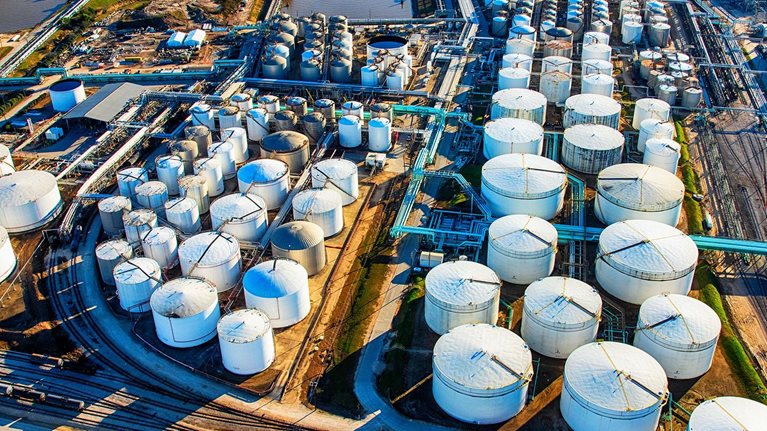In today’s rapidly changing energy landscape, refinery transactions have become a focal point of investment discussions. Despite uncertainties surrounding the long-term future of refineries in a transitioning world, many refineries continue to be acquired but at lower values than in the past. On a stage set for change, what is the rationale for investing in the refining sector now?
For a few bold investors, refineries can still be a strategic investment generating short-term profits while providing opportunities for securing green assets in the long term. With the world still relying heavily on crude oil refining for fuel supplies, the next decade will likely see continued profits in this sector. And when the push for green fuels outweighs the need for refined oil products, these refineries could have a second life as green manufacturing facilities such as renewable diesel or sustainable aviation fuel (SAF) facilities.
In this article, we explore trends in refinery transactions, the short- and long-term opportunities for investors, and what to keep in mind when deciding whether to invest.
Transaction volumes recover post-pandemic but at lower values
While the number of global refinery transactions took a dip in 2020 with the onset of the COVID-19 pandemic, there is still significant interest in these assets. In 2021 and 2022, the average transaction rate of refinery assets—as measured by both the number of refineries and capacity—showed strong recovery, with 25 refineries changing ownership, representing 2.5 million barrels per day of capacity (Exhibit 1). This is in line with the pre-pandemic trend, indicating a renewed wave of refinery transactions.

Despite revived interest in these assets, transaction values have seen a global decline. While the average transaction value between 2016 and 2019 was $12,000 per barrel, the average between 2021 and 2022 was $5,000 per barrel, a decrease of more than 50 percent (Exhibit 2).

Transaction values are declining, and they are also converging across geographies. A transaction gap of approximately $8,000 per barrel was observed between the Middle East/Asia and Europe/North America between 2016 and 2019, yet both regions held similar values of approximately $4,000 per barrel in 2021 and 2022. This suggests that a global consensus is emerging in the market outlook for refineries.
Would you like to learn more about our Oil & Gas Practice?
What is driving the global decline in transaction values?
The worldwide view on the outlook for this sector is increasingly bearish. Energy transition trends, including higher electric vehicle adoption in many markets and higher compliance costs from environmental regulations, are reducing growth opportunities for the sector. The heightened long-term uncertainty in the future of refining is creating more sellers than buyers and thus a decline in transaction values across geographies. Although fuel demand is still expected to grow in the short- to medium-term, global refining overcapacity has reduced the need for investment in new refineries.1
This market is leading many refiners to reassess their refining portfolios, and in some cases, reduce them through shutdowns and divestitures. The global majors (BP, ExxonMobil, Shell) have been particularly active in shedding smaller refineries, even as they continue to invest in some of their larger hub-market assets.2 This is in line with a strategy focused on consolidating downstream into a core set of very efficient assets with high option value as a platform to integrate into chemicals, renewable fuels, or other emerging energy processing areas. Smaller, more isolated assets don’t map well to this strategy but currently remain profitable, accounting for many of the assets that are being sold.
The fall in asset values can be attributed to this structural shift in strategy by many players that are suddenly putting assets on the market at the same time. This alone helps to explain falling transaction values. Adding to this is the generally lower long-term market outlook for the industry shared by most industry players, despite recent high profitability.
Refineries present an opportunity for some acquirers
The market is seeing conflicting actions, with several players shedding assets while others continue to find refining an attractive market to enter. Within this dichotomy, current market conditions present an opportunity for buyers who have a bold belief in the potential for value creation. The decline in transaction values and the short-term outlook for high margins provide an opportunity for investors to capture both short-term benefits and long-term opportunities.
Over the next few years, the refinery sector is likely to hold sizeable profit potential. Even though new refineries are not being built—and a large number of closures were seen following the COVID-19 pandemic—the demand for crude oil products is still high. The US Gulf Coast cracking margins are projected to average $19 per barrel of crude oil (bbl) between 2022 and 2025 versus a historical average of $7 per bbl from 2015 to 2019.3 With margins remaining inflated, refining could offer a valuable short-term investment opportunity.
In the longer term, as the demand for refined oil products decreases globally, some refineries could have a second life as renewable fuel plants, such as biorefineries to produce biofuels.4 Acquiring these assets now provides a low-cost option to participate in renewable fuel production or other green manufacturing opportunities in the future.

Converting refineries to renewable fuels: No simple switch
Who are the likely buyers?
Some investors are not prepared to take on the long-term risk associated with refineries and are therefore willing to sell these assets at a relatively cheap price, even though a short-term market bump is expected.5 An investor who believes in their ability to extract value beyond normal operations—by making strategic investments and operational improvements, for example—could be well suited for this type of investment.
Many different types of investors could benefit from such transactions, including—but not limited to—refiners looking to scale up, buyers who would like to expand internationally, and private equity players. Small- to medium-scale independent regional refiners who would like to take advantage of niche opportunities could be potential buyers, too, with the large profit opportunity and ability to improve operations across assets attracting such players.
Buyers who are looking to expand internationally to secure access to crude placement could also benefit. These experienced buyers could potentially negotiate better rates with intermediary service providers, or even eliminate the cost of additional pipelines, terminals, and other market participants altogether. Acquiring product short-market assets would be a bet on product-demand growth in local markets served by these assets.
This market is also attractive to private equity players who expect to accelerate the profit generation potential of assets and who can deploy capital along with strong management teams. Such buyers could also partner with existing small- or medium-sized operators to drive consolidation across similarly sized players.
Overall, buyers with a strong skillset in improving asset performance, the ability to leverage financial market savvy behind physical assets, and expertise in converting refineries into other types of low-carbon facilities could continue to seek out investments at these low transaction valuations.
Factors to keep in mind when investing
An investor who is ready to seize this opportunity could keep the following factors in mind:
- Hold, expand, and transform as a base strategy. Using a base strategy that encourages holding the asset could be beneficial if the market continues to support high margins in the short- and medium-term and could result in attractive returns. There is an opportunity to double down and create a portfolio of similar assets by taking advantage of low transaction values, further driving cost and margin synergies across the system.
- Seek out opportunities for a transformative operating model. A well-executed transformation plan can unlock significant potential for improvement in the short term with minimal capital investment. By embracing an operating model that encompasses a portfolio of similar assets, resources can be shared in procurement, IT, HR, and technology across the assets. A well-executed transformation plan that embraces this type of operating model could deliver an additional $0.5 to $1 per barrel of crude oil within 12 to 18 months.6
- Mitigate possible remediation costs. Assuming ownership of an asset may come with eventual shutdown or remediation costs. However, this is not necessarily a downside given the attractive conversion opportunities for refineries. SAF facilities, or other green manufacturing facilities, can be modeled from existing brownfield sites—such as refineries—which provide a significant advantage due to the existing infrastructure, permitting, and logistics features. These conversion options could mitigate the risk of shutting down, keeping refineries a viable investment opportunity.
These considerations can help investors grasp the opportunity to earn good returns in the short term and be ahead of the curve in the green fuel transition, as low asset prices play in favor of bold buyers.
Investing in refineries now could enable buyers to capitalize on the rising demand for refined oil products in the short term and to convert refineries to produce renewable fuels ahead of the energy transition in the long term. The window of opportunity is narrowing, and bold investors can act now to reap the rewards.


